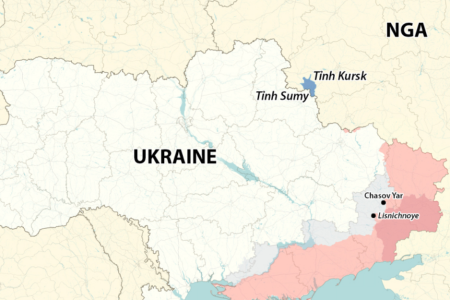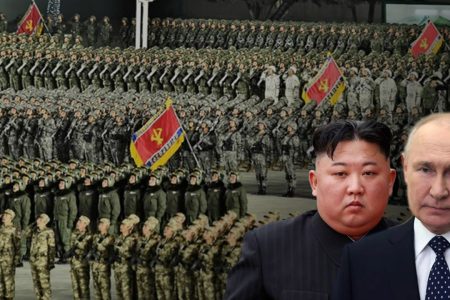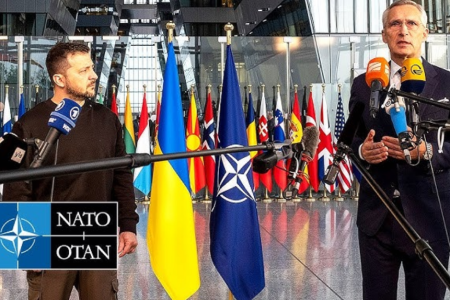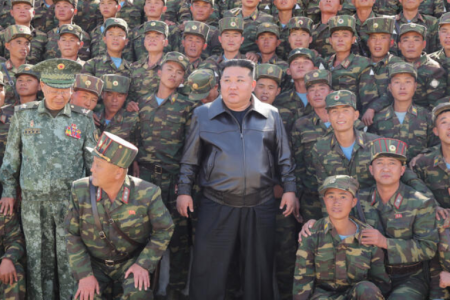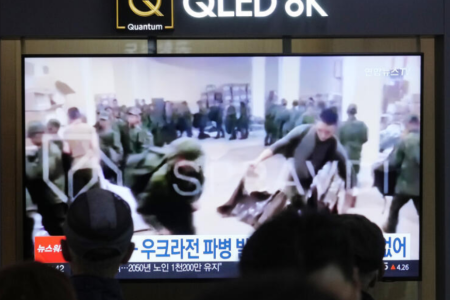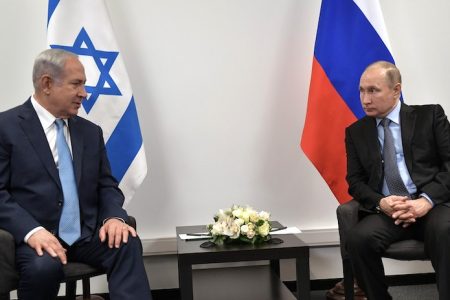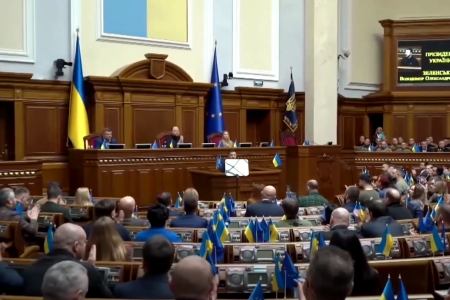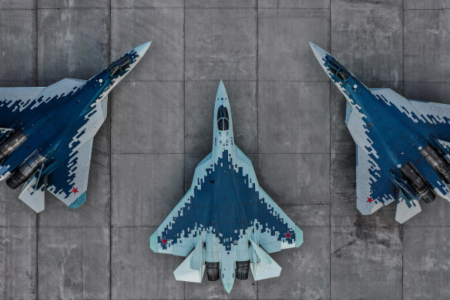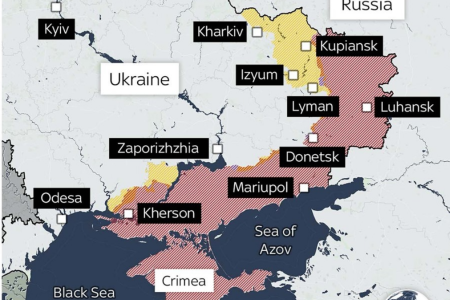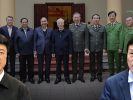
Associate Professor, Ph.D. Dinh Cong Tuan- European Research Institute
1. China’s current global, Asia-Pacific strategy
Nearly 100 years since the founding of the Communist Party of China (1921) and more than 70 years since the founding of the People’s Republic of China (1949), China’s strategic goal has not changed, that is to build China. become the number 1 power leading the world. After the 17th National Congress of the Communist Party of China (2012), China has risen to the second position in the world (after the US) in terms of economic size, with GDP reaching $2.1 trillion. China has given the theory of “great revival of the Chinese nation,” building the “Chinese Dream” with 2 criteria with two criteria: “two 100-year goals” (100th Anniversary of the founding of the People’s Republic of China). The Party (1921-2021) aims to build a well-off society comprehensively (escape poverty, build a middle-class society) and celebrate the 100th anniversary of the country’s founding (1949-2049) to successfully build a modernized socialist state of China with civilization, democracy, wealth, strength, harmony (China is strong, becoming a great power, leading the world). By the time of the 19th National Congress (2017) China had set out 3 goals by 2049, 2 goals were stated in the XVII Congress (2012) remained unchanged, only adding the goal of building China into a powerhouse in the Asia-Pacific region (Asia-Pacific) by 2035. Regarding China’s strategy in the Asia-Pacific region, China’s White Paper published on January 10, 2017, has included the entire content, including 6 parts as follows: 1) China’s policy positions towards security cooperation in the Asia-Pacific region; 2) Security ideas in China’s Asia-Pacific region; 3) The relationship between China and major countries in the Asia-Pacific region; 4) China’s position and policy on hot issues in the region; 5) China joins the border mechanism in the region; 6) China engages in non-traditional security cooperation in the Asia-Pacific region[1].
In a nutshell, the cross-cutting content of China’s strategy in the Asia-Pacific region is that China will strengthen its economic strength to serve the great power strategy, and play a leading role in the region. China will not share with any other country the role of country and leader in the Asia-Pacific region. China’s initiatives are also increasing, ultimately aiming to lead the region and the world in the future. In particular, there is the initiative “Belt and Road Initiative” (BRI). It is now China’s great strategy of the century, not an initiative anymore.
This strategy has attracted more than 65 countries to participate with a GDP of up to $23 trillion, equivalent to one-third of global GDP, linking 62% of the entire world population. BRI is considered China’s project of the century, exceeding the scale and scope many times of the US Mac plan to rebuild Europe after 1945. BRI was born in 2013 as a global strategy connecting all 3 continents Eurasia – Africa by both land and sea. The objective of China’s BRI strategy is i) to expand the strategic space and create a backyard area for China to control the Eurasian-African continent; ii) counterbalance the US “rebalancing” strategy in the Asia-Pacific; iii) dominate the Indian Ocean region and the area connecting the Pacific and Indian Oceans; iv) control-related shipping lanes and regional seaport systems, govern oil and gas supplies, establish military bases in the areas through which these roads pass; v) creating the socio-economic environment for China’s “soft power expansion;” vi) building a security perimeter around China to prevent the United States and its allies from accessing what Beijing considers its “backyard“; vii) rely on economic cooperation to promote political relations, create a catalyst to solve the problems in China’s relations with regional countries, and prevent the “clustering” of countries in the regional disputed areas with China, including the issue of sovereignty over seas and islands; viii) promoting regional economic cooperation; ix) strengthening the role of the springboard of the regional economy around China; x) support for China to go out into the world; xi) through the “5 channels” (policy; land and sea; trade; currency and people) to access, penetrate and control the economy of the “expanded neighbor” area to take the lead in international trade, the right to evaluate and the right to distribute international resources; xii) solving the problem of excess production capacity, finding markets for stagnant goods; viii) seek investment markets, effectively use China’s huge foreign exchange reserves, seek markets for the renminbi, and accelerate the process of renminbi internationalization; xiv) access to resources and energy, especially oil and gas, xv) take advantage of the surrounding environment to create conditions for more equitable development among regions and regions in the country, especially in the border areas, Western China [2].
In addition to the “Belt and Road” (BRI) strategy, China has also developed a “big country foreign policy“, a “neighborhood diplomacy” strategy, and a “community of human destiny” (incl. China-ASEAN community of destiny, Lancang-Mekong community of destiny…), “Asian community of destiny” (In 2014, China put forward the concept of “New Asian security” in order to seek leadership role. This is the content of adjusting the strategic security thinking of the Chinese leader, according to which, China advocates that “Asia’s affairs will be solved by the people of Asia” which is different from previous claims that the Pacific Ocean is wide enough to accommodate both China and the United States), etc. In addition, China has taken initiatives in areas such as i) establishment of a partnership agreement comprehensive RCEP (including 10 ASEAN countries and 6 countries are China, India, Japan, Korea, Australia, Newzealand; ii) propose to build an Asia-Pacific free trade area including 21 member countries APEC; iii) establishment of Asian Infrastructure Development Investment Bank (AIIB) and RMB Internationalization, etc.
In summary, China has built a global and regional strategy for the Asia-Pacific for a long time, especially since the 18th National Congress (2012), China has declared to the world that it will realize the “Chinese dream”; “Great revival of the Chinese nation“, implementing the strategy of “big country diplomacy“, “neighborhood diplomacy“, the “belt and road” strategy, building a “community of human destiny” Asian Community of Destiny”… All strategies and initiatives serve the ultimate goal that China will rise to world leadership by 2049.
2. What is Vietnam in China’s current strategy?
2.1. China invaded Vietnam in history
During the length of building and defending the country, Vietnam was invaded and colonized by Han expansionism for 10 centuries, from 179 BC (2nd century BC), Co Loa citadel. After being defeated by the invasion of Trieu Da, Au Lac state entered the night of the Northern domination lasting 1,000 years, from 179 BC to 938 (the victory of Bach Dang by Ngo Quyen, the victory over the Chinese invaders, liberate the country). During 1,000 years of being invaded by Chinese expansionists (1,000 years of Northern Domination), Vietnam still maintained the strong cultural vitality of the Vietnamese nation. It is the source of strength against China’s plot to expand, hegemony, and want to take over Vietnam. Although during the 1,000 years of Northern domination, China implemented a strong policy of Sinicization, despite being covered with a large amount of Sinicized paint outside, the core is still the indigenous Vietnamese culture, with Vietnamese characteristics. During the following centuries, China’s expansionism and hegemony always waged wars of aggression, wishing to impose a yoke of rule and annex the country of Vietnam. The cause of the struggle against northern aggression is the main theme of Vietnam’s history over the next 10 centuries. Vietnam was brave, resilient, persistent, long-term resisting all plots and tricks of invasion and expansion of the Chinese invaders, and always affirmed the independent and self-reliant position of the nation. As, Nguyen Trai wrote in “Cao Binh Ngo“: “Tu Trieu, Dinh, Ly, Tran built an independent foundation during Han, Tang, Tong, and Nguyen, each side was heroic in one direction. high independence, equal political position between Vietnam and China[3].
2.2. Vietnam’s position in China’s global and regional strategy
Vietnam has an extremely important geopolitical position in China’s global and regional strategy.
Firstly, Vietnam shares a land and sea border with China. Among the three neighboring countries that share a border with Vietnam, namely China, Laos, and Cambodia, China is still the country that has caused Vietnam many challenges from time immemorial. China is the only neighboring country that has invaded and colonized Vietnam many times in history. China has always been a threat to Vietnam due to two reasons: geographical proximity and power asymmetry between the two countries. Because Vietnam is a colony of Southeast Asia, Southeast Asia is the only gateway for China to expand its influence and occupy land to the South. In 1963, Chinese Premier Zhou Enlai once said “our country is big, but there is no way out, so we hope that the Vietnam Workers’ Party will open a new path to Southeast Asia.” And Chinese President Mao Zedong affirmed that “we must win Southeast Asia” including South Vietnam, Thailand, Burma, Malaysia, and Singapore, a region like Southeast Asia is very rich, there there are many minerals, worthy of the need to capture…After we have won Southeast Asia, we can strengthen our strength in this region, then we will have the strength to confront the block Soviet Union – Eastern Europe, the East wind will blow away the West wind” [3].
Second, although Vietnam is a small country in Southeast Asia, its territory stretches, almost encircling one edge of the East Sea (South China Sea). Looking at the map, it can be seen that Vietnam is the only country in Southeast Asia whose territory is both on the Asian continent and bordering the East Sea. Vietnam is also the country that controls the largest number of islands in the Truong Sa (Spratlys). Moreover, the Cam Ranh port in Nha Trang is one of the most ideal deep-water ports in the world, very popular with “navies of other countries due to favorable hydrological, geological, and tidal conditions.” The bay is quite regular, relatively punctual, the bay bottom is flat, mainly alluvial sand is checked… In other words, Cam Ranh port is a naval base with an extremely solid defensive position, a launchpad ideal for customs forces controlling the South China Sea.
As a country rich in resources, having the 3rd largest young population in Southeast Asia, having the first real combat army in Asia, and having an extremely important geostrategic position, Vietnam is considered as a “combating force” maintaining China’s southern path of progress both on land and at sea“, therefore, China always considers Vietnam as its rival to compete, restrain and control.
2.3. Vietnam in China’s global and regional strategy
Along with major adjustments in the grand strategy and in the global strategy, the region of China, Vietnam – a big neighbor to the south of China is being greatly influenced. Vietnam has a special place in China’s foreign policy. Vietnam is already an important link in China’s infrastructure connection network with Southeast Asia. Since the Asian financial crisis of 1997-1998, China has rapidly implemented the policy of “charming attack“, attracting Southeast Asian countries to become a region of the major influence of China. China is the first country to establish an FTA and promote the expansion of ASEAN + 1 FTAS and ASEAN + N cooperation models. In the “One axis, two wings” initiative that China launched with Southeast Asian countries (one axis) is the Nanning – Singapore economic corridor, the two wings are the Greater Mekong Subregion Cooperation (GMS) and the Tonkin Bay Cooperation (expanded), then Vietnam participates in all three inter-regional cooperation and infrastructure development the inter-regional connection layer between China and the entire Southeast Asian region. Vietnam also proposed the idea of building the “Two Corridors, One Belt” initiative in the early years of the 21st century[4]. These programs show that Vietnam has an important gateway position in China’s regional strategy, helping China move south and expand its influence in the Southeast Asian region. However, during the period of proposing previous ideas of connection and cooperation with Vietnam and Southeast Asian countries, China is only in the “getting rich” stage and seeking to expand its influence in the region. closely related to China’s security and development. At present, Xi Jinping has determined that China is entering a new era of “strengthening,” “entering the center of the world political arena.” With China’s new position and power and new global vision, Vietnam and Southeast Asia are still ranked by China in an important position in the struggle for influence with the US Indo-Pacific strategy. The Asia-Pacific region has always been highly valued by China and is determined to vie for influence with the US, in order to dominate and gain leadership in this region. On January 11, 2017, China published a White Paper on Asia-Pacific security cooperation policy. In essence, this is the focus of China’s Asia-Pacific strategy, the goal that China wants to achieve in its relations with Vietnam and Southeast Asian countries is: i) continue to maintain and strengthen the regional environment in the surrounding area is peaceful and stable, creating favorable conditions for China to focus on economic development and achieve political goals according to 3 timelines 2020, 2035, 2049; ii) Weakening the network of US alliances in the region, and at the same time preventing any alliances and links that are likely to form a bloc against China in the future; iii) establishing China’s solid international position, forming a new political and economic order dominated by China to replace the old one dominated by the US and the West; iv) demonstrate China under the leadership of the Communist Party of China as a typical model for developing countries, replacing the American and Western-style democratic development model, or establishing a “consensus” mechanism of Beijing” instead of “Washington Consensus.”
To achieve the above goal, China has used the “Belt and Road” strategy (BRI) as a key tool to draw Vietnam and Southeast Asian countries into China’s political and economic orbit and increase political and economic dependence on China. China has identified five key cooperation contents in the BRI, including opening policies, connecting roads, smooth trade, circulating currency, and people’s understanding. With the first content being policy linkages, China is trying to entice Vietnam and all ASEAN countries to join and support the BRI with both sticks and carrots. Vietnam and ASEAN countries have signed MOUs with China to cooperate in promoting BRI; Vietnam and ASEAN countries are the first countries to join the Asian Infrastructure Investment Bank (AIIB), a financial institution established by China. In addition, Vietnam and ASEAN, together with China, have implemented many other cooperation contents in finance, currency, and banking. China also promotes public diplomacy with Vietnam and ASEAN, promotes the construction of Confucius Institutes, Vietnam-China Cultural Center, promotes Chinese cinema to increase China’s soft power in Vietnam and the region. area. The main content is the connection and development of inter-regional infrastructure, which China continues to deploy between China and Vietnam and ASEAN on the frameworks that China proposed earlier. Compared with the connection programs in the BRI today, it can be seen that the current position of Vietnam is as follows: Vietnam is located both on the two branches of the Silk Road on land and at sea and is also related to three branches of the Silk Road. The route is located on China’s BRI.
With 2 branches on land (economic belt, silk road, SREB) and at sea (21st century maritime Silk Road, MSR), BRI is divided into 5 main routes to connect Asia and Europe Europe and Africa, including (1) connecting China to Europe through Central Asia and Russia; (2) connecting China with the Middle East through Central Asia; (3) Convergence of China and Southeast Asia, South Asia and the Indian Ocean; (4) connecting China with Europe through the East Sea and the Indian Ocean; (5) connecting China with the South Pacific through the South China Sea. In particular, SREB focuses on 3 routes 1, 2, 3. And MSR focuses on 2 routes 4 and 5 to connect China’s coastal ports with ports in Asia, Europe, Africa, and Oceania. Along these 5 routes, BRI will make use of international traffic routes, as well as point cities and key ports, promoting cooperation and coordination to build 6 international economic cooperation corridors[edit] 5].
Vietnam is also directly part of one of the six economic corridors of the BRI, the China-Indochina Peninsula Economic Corridor. There are 6 economic corridors connecting China with countries along the BRI, including (1) China – Mongolia – Russia; (2) New Asia-Europe land bridge; (3) China – Trimh and West Asia; (4) China – Indochina Peninsula; (5) China – Pakistan; (6) Bangladesh – China – India – Myanmar (BCIM).
However, although there are many main routes of the BRI, Vietnam is not a focal point for regional and inter-regional connectivity. Vietnam only holds a weak connection position in both the sea and land routes connecting the entire Indochina peninsula with the Kunming (China)-Singapore axis.
If we consider Vietnam’s position in the China-ASEAN connection that has been promoted in the second half of the first decade of the twenty-first century, it can be seen that Vietnam plays an important role in the “One axis, two wings” initiative. Guangxi provincial government, China proposed to SEA countries. This “One axis, two wings” strategy aims to increase influence in Southeast Asia, also known as the three-M strategy based on three directions: economic cooperation on land (mainland), economic cooperation maritime economy (maritime), and economic cooperation in the Mekong sub-region (Mekong). This strategy is based on three directions to connect all ASEAN countries, demonstrating China’s goal to expand the development space, to attract and integrate the development of the Southeast Asian region into the common development of China. Regional connectivity programs between China and ASEAN also show a gateway position of Vietnam for China to move south. Therefore, within the framework of “two corridors, one belt” proposed by Vietnam, Vietnam also belongs to all three axes in China’s “One axis, two wings” strategy with the whole region.
However, after China started building a “Belt and Road” (BRI) strategy with 2 main roads on land and at sea, parallel to 5 routes and 6 economic corridors on land, ASEAN from the central position in regional cooperation becomes a small part of China’s grand strategy of connecting with the whole Asia region and the world. Accordingly, ASEAN will be directly related to the maritime road the two BCIM fast corridors, and the China-Indochina economic corridor in China’s grand strategy. And also according to this grand strategy, Vietnam’s position for China to move south will also be blurred. On these routes, Southeast Asian countries that have a key position with China will be Myanmar (belonging to the BCIM corridor, which is a route for China from the southwest to the Indian Ocean), Thailand (through the BCIM corridor). planned Kra Isthmus and Indonesia (the island nation that China forbids passage to the South Pacific, and is a mid-range country with the largest population size, and neutral orientation in ASEAN). Vietnam also presents a lackluster image in typical Chinese projects, and Vietnam is not present among the eight key ports located on the BRI. And among the countries, there are political security risks, financial risks, government efficiency risks, macro risks, regulatory and legal risks, labor market risks, institutional risks, etc. When participating in the RRI infrastructure, Vietnam is only exposed to government efficiency risks and labor market risks that are not in the group of high-risk countries[6].
Regarding Vietnam’s position in China’s neighboring foreign policy, in the “Strategic Outline of National Security” approved by the Politburo of the CCP on January 23, 2015, China considers Japan and the United States to be challengers of the Chinese consciousness. As for small ASEAN countries like Vietnam and the Philippines, although they are not considered rivals, they are at risk of cooperating with other countries against China. Therefore, China continues to insist on tougher sovereignty claims, China still has the goal of stabilizing Sino-Vietnamese relations so as not to push Vietnam to the US. And China isolated the Philippines not to let Vietnam support or cooperate with the Philippines into a bloc of the US-Japan – Philippines – Vietnam against China[7]. Two scholars Li… and Zheng rank Vietnam in the group that needs to be cautious, careful and restrained, only promoting cooperation in fields and bringing benefits to China. Vietnam has not been listed in countries with a high degree of conflict with China such as Japan and India nor a country with great interests like Indonesia, Kazakhstan. Being placed on par with Australia has both significant benefits, but caution is also required.
The above quotations show that China’s main policy towards Vietnam will be both balance and engagement, restraint and manipulation. The goal in relations with Vietnam is not to let Vietnam get stronger and get rid of China’s domination, but also not to let Vietnam be too disgruntled and seek alliances against China. In general, China’s basic policy towards Vietnam can go in the following directions:
Firstly, to ease with Vietnam, in order to avoid further deterioration of tense relations, to increase diplomatic exchanges at both summits and levels.
Second, strengthen cooperation in all aspects, especially economics, trade, and trade in order to use economic benefits to bring Vietnam into China’s orbit, at least to ensure that Vietnam maintains a neutral position between China and the US.
Third, put pressure on ASEAN, divide the bloc through small members that are easily influenced by China to hinder a stance that is contrary to China’s interests and prevent the formation of an “anti-China bloc“. ].
Conclusion
China’s global and regional strategy is to become a powerful country, leading the world in the middle of the twenty-first century. Vietnam’s role in China’s global and regional strategy is very clear, although not too large, it has a strong impact on Vietnam, but the challenge is even greater than the opportunity, especially the challenge of security, national sovereignty over sea and islands, challenge economic dependence, create political dependence. In the current period, Vietnam needs to adjust and clearly define how to respond to China’s global and regional strategies. It is adapting to the rise and growth of China, clearly defining Vietnam’s goals to ensure national security, constantly developing, creating a diversified position and force, and is facilitating relations with countries around the world, maintaining a peaceful environment for development, wisely put national interests first in dealing with China[10].
Thoibao.de (Translated)
Source: https://phapluatdansu.edu.vn/2020/06/16/07/41/viet-nam-trong-chien-luoc-cua-trung-quoc-hien-nay/amp/
Notes:
[1] http://www.scio.gov.cn/zfbps/32832/Document/1539907/1539907/htm
[2] http:// css. hcmussh.edu.vn/?ArticleId -16d8fc56-4445-46b7-8b1d-đab9ca7
[3] http://www.vanhhoanghean.vn/chuyen-muc-goc-nhin-van-hoa/nhung-goc-nhin-van-hoa/tu-vn-gian-khoan-hd-981-tư-lieu-ban-ve-tham-vong-lanh-tho-cua-Trung-Quoc…
[4] http://enternens.vn/viet-nam-voi-sang-kien-vanh-dai-va-con-dduong-111029.html
[5] http://china-trade-research.hktdc.com/business-new/article/the-Belt-and-Road-Initiative/The-Belt-and-Road-Initiative/obor/en/1/1xOA36B7.htm
[6] Pencea, Sarmiza (2017) “A lot into the complexity of the one Belt, One Road“
[7] http://www.chinatimes.com/cn/newpapers/20150125000741-260309
[8]Li, Xue, and Zheng, Yuwen (30/3/2016), “Ablucprint for China’s neighborhood Diplomacy the diplomat.
[9] Xem thêm Kiều Tỉnh (22/6/2015) “VN trong chính sách của TQ“, tầm nhìn – tri thức và phát triển, trên http://tamnhin.net/viet-nam-trong-chinh-sach-cua-Trung-Quoc-4/820.html
[10] Nguyễn Quang Thuấn “Chiến lược toàn cầu của TQ trong bối cảnh mới“, đề tài cấp Bộ Viện Hàn lâm KHXH Việt Nam, năm 2018.



